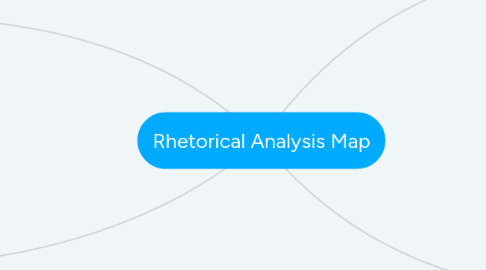
1. Reflection and Revision
1.1. 3A// Adapt composing and revision processes for a variety of technologies and modalities.
1.1.1. Learn and apply methods of composing and revising, with different mediums and technologies.
1.1.1.1. PowerPoint- Learned and application and presentation of knowledge in a multi-model form,// Project 4 ePortoflio.
1.1.1.1.1. https://drive.google.com/open?id=1tEd4T4GMH79h5ZcWqPMiT0oYqK0t1arq
1.1.1.1.2. Introduction - English 102 - University of Arizona
1.2. 3D// Identify the collaborative and social aspects of writing processes.
1.2.1. Be able to point out where and when outside sources are required.
1.2.1.1. Interview- Raw data and Analysis: Importance to establish credibility in field.
1.2.1.1.1. https://drive.google.com/open?id=1KNJq4qS_tRy3a6HR-oUjnQx5_vLHBfsKdvfJeaLR1ns
2. Conventions
2.1. (4B) Reflect on why genre conventions for structure, paragraphing, tone, and mechanics vary.
2.1.1. Be able to explain why writing conventions, structures, tone, genres, paragraphing and mechanics change depending on context, audience, and purpose.
2.1.1.1. Project one- similar theme noted but I did not explain the why.
2.1.1.1.1. https://drive.google.com/open?id=1Y38m4GcYgJ9X0AZv5YQEn1wVwAWPDIX79Nt0HKV2fDc
2.2. (4C) Identify and effectively use variations in genre conventions, including formats and/or design features.
2.2.1. Be able to write or compose in different formats, designs and genre conventions.
2.2.1.1. Interview*** vs annotated bibliography (give both links)
2.2.1.1.1. https://drive.google.com/open?id=1K4ahXTG2Q7XE7VfmiSrBH3K-56PimSZcyc2sL45AVOM
2.2.1.1.2. https://drive.google.com/open?id=1WyM75VKdNHcSsvY28IAPWjFUR7c5HcO_FUr40zBxOpE
2.3. (4D) Demonstrate familiarity with the concepts of intellectual property (such as fair use and copyright) that motivate documentation conventions.
2.3.1. Be able to document sources accordingly. Show a mindful awareness of source/reference material. Understand how and why a source is documented in its respective manner.
2.3.1.1. Annotated Bibliography
2.3.1.1.1. https://drive.google.com/open?id=1K4ahXTG2Q7XE7VfmiSrBH3K-56PimSZcyc2sL45AVOM
3. Learning Goal #1
3.1. I want to improve my Source citing skills.
3.1.1. Project one- MLA source citation
3.1.1.1. https://drive.google.com/open?id=1Y38m4GcYgJ9X0AZv5YQEn1wVwAWPDIX79Nt0HKV2fDc
4. Learning Goal #4
4.1. I want to be able to better use turn of phases and idioms in my writings.
4.1.1. Journals? Annotated Bibliography
4.1.1.1. https://drive.google.com/open?id=1K4ahXTG2Q7XE7VfmiSrBH3K-56PimSZcyc2sL45AVOM
5. Rhetorical Awareness
5.1. 1B : Analyze a text's purpose, audience, and context, and how it affect rhetorical options.
5.1.1. I need to be able to identify the purpose, audience and what the context is to understand the options chosen in a piece of rhetoric.
5.1.1.1. Interview- Defines who my audience is and the purpose in which content is written.
5.1.1.1.1. https://drive.google.com/open?id=1WyM75VKdNHcSsvY28IAPWjFUR7c5HcO_FUr40zBxOpE
5.2. 1E: Respond to a variety of writing contexts calling for purposeful shifts in structure, medium, design, level of formality, tone, and/or voice.
5.2.1. Analyze different writings with different contexts, tone, voice, formality and purposeful shifts in structure.
5.2.1.1. The literal purpose of Project One
5.2.1.1.1. https://drive.google.com/open?id=1Y38m4GcYgJ9X0AZv5YQEn1wVwAWPDIX79Nt0HKV2fDc
6. Critical Thinking an Composing
6.1. 2A. Employ a variety of research methods, including primary and/or secondary research, for purposes of inquiry.
6.1.1. Conduct my own research and use the research of others.
6.1.1.1. project one- used knowledge from interview with comparative analysis as research of others.
6.1.1.1.1. https://drive.google.com/open?id=1Y38m4GcYgJ9X0AZv5YQEn1wVwAWPDIX79Nt0HKV2fDc
6.2. 2B. Evaluate the quality, appropriateness, and credibility of sources.
6.2.1. Be able to determine wether or not a source is credible, appropriate or of decent quality.
6.2.1.1. project one - comparing sources
6.2.1.1.1. https://drive.google.com/open?id=1Y38m4GcYgJ9X0AZv5YQEn1wVwAWPDIX79Nt0HKV2fDc
6.3. 2D: Synthesize research findings in development of an argument.
6.3.1. Translate primary research in order to support a hypothesis.
6.3.1.1. Project 3 draft 1
6.3.1.1.1. https://drive.google.com/open?id=1gBIu6obc8ZvWs2hyN_m0KZYVmhHGTAceEqykUExFO6U
6.4. 2F: Compose persuasive researched arguments for various audiences and purposes, and in multiple modalities.
6.4.1. Present researched ideas to different audiences, for different reasons, in different mediums.
6.4.1.1. PowerPoint- multimedia, mix methods presentation for professor and class// Project 3 final.
6.4.1.1.1. https://drive.google.com/open?id=1tEd4T4GMH79h5ZcWqPMiT0oYqK0t1arq
6.4.1.1.2. https://drive.google.com/open?id=1oJSfWAgv3CIVAQh9FXeswhM1UNukmXY1
7. Learning Goal #2
7.1. I want to better define my Voice as a writer. (Use of subjective vs objective and honing my tone)
7.1.1. Annotated Bibliography
7.1.1.1. https://drive.google.com/open?id=1K4ahXTG2Q7XE7VfmiSrBH3K-56PimSZcyc2sL45AVOM
8. Learning Goal #3
8.1. I want to learn how to write in a scientific capacity, both scholarly and popular.
8.1.1. Project one- interview and comparative analysis, discipline specific conventions.
8.1.1.1. https://drive.google.com/open?id=1Y38m4GcYgJ9X0AZv5YQEn1wVwAWPDIX79Nt0HKV2fDc

